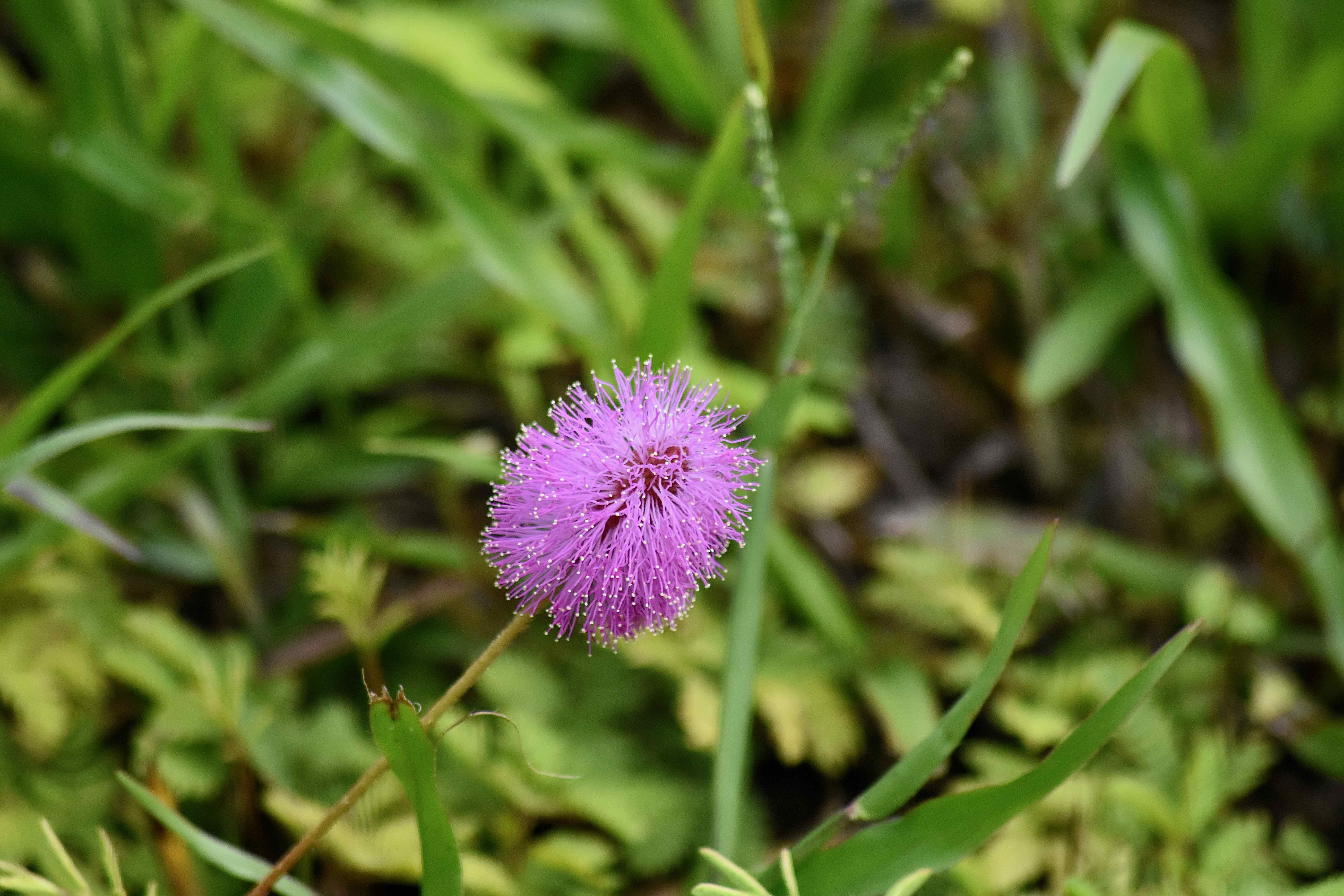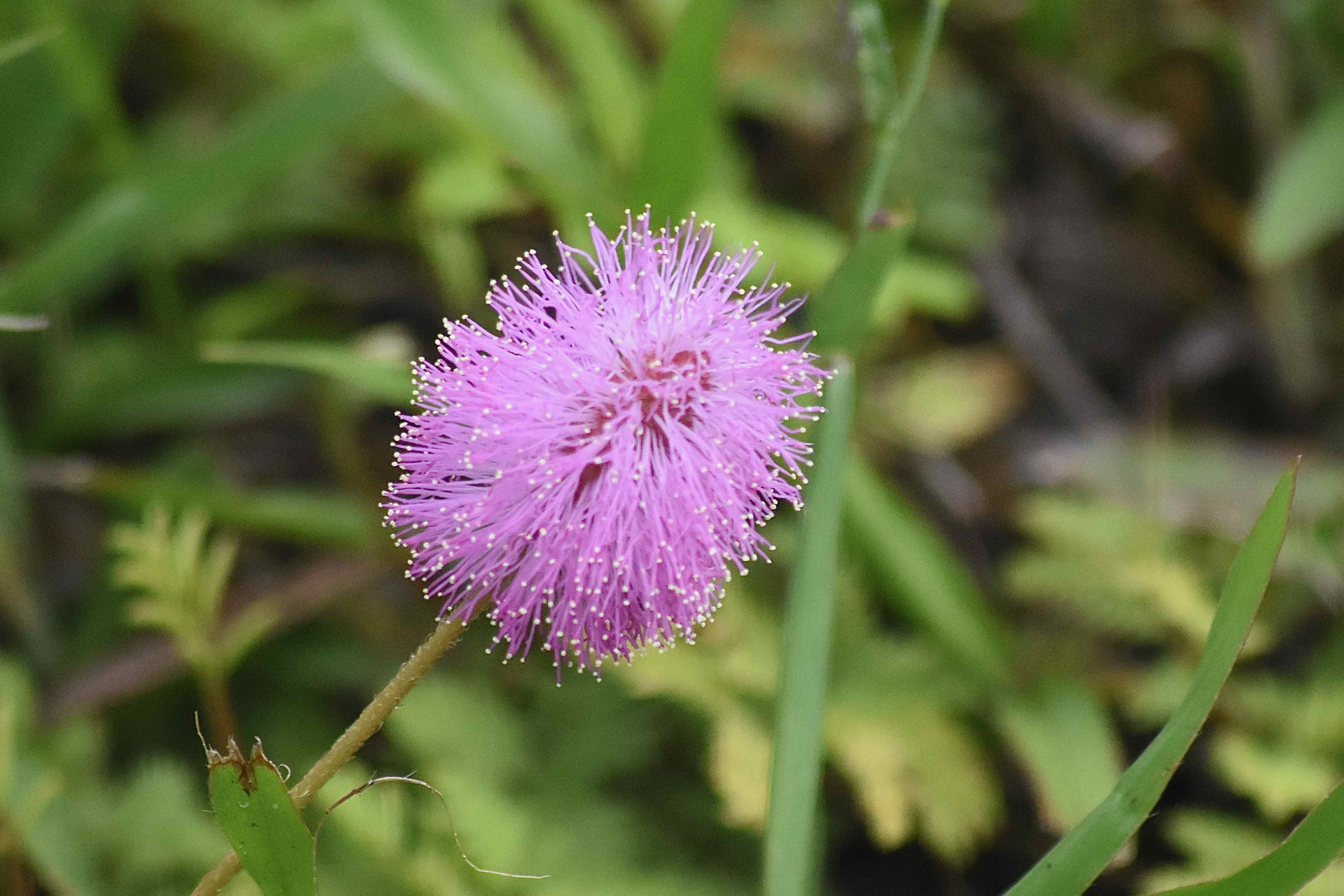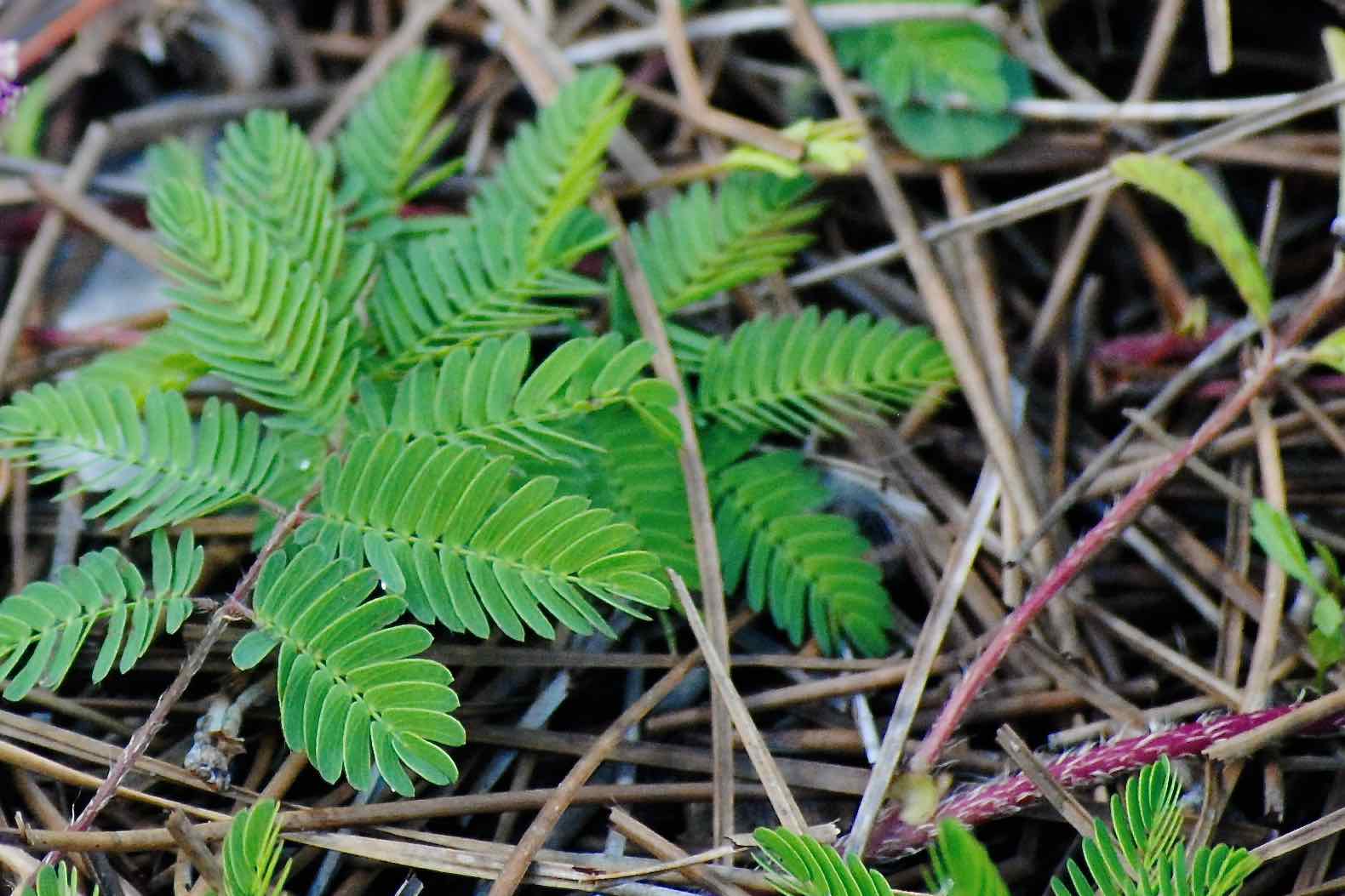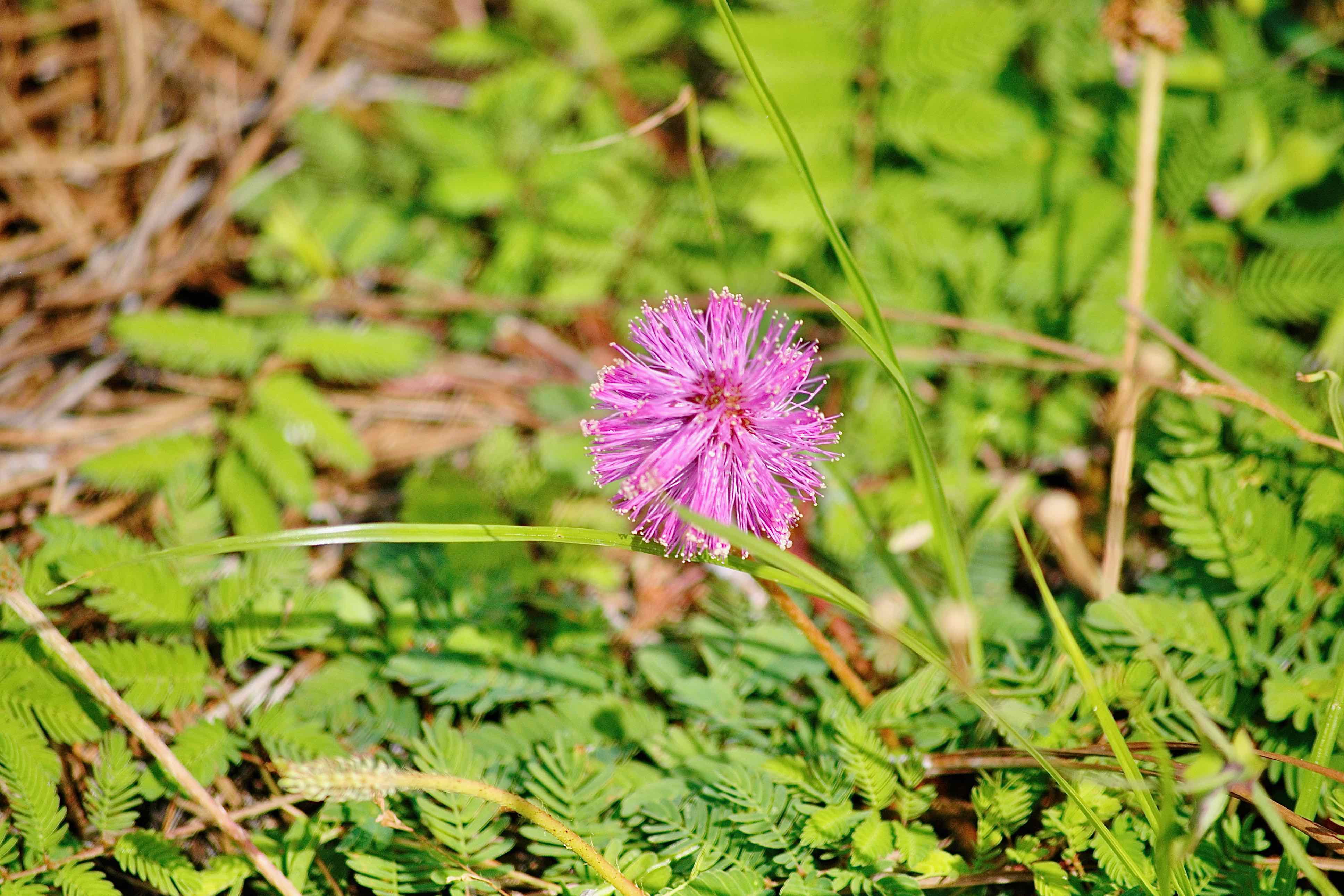
Powderpuff, photographed at Snook Islands Natural Area, Lake Worth, Palm Beach County, in March 2014.
For much of the year, powderpuff, Mimosa strigillosa, is pretty much unnoticeable and unremarkable. But come spring, that changes completely.
Powderpuff hugs the ground, more likely to be stepped on than admired. It's tough plant, tough enough to be used as a ground cover in high-traffic places. But it sends out an oversized cluster of tiny pink flowers that loudly, beautifully, announces its presence to the world.
It is a Florida native found in scattered counties throughout the state but on the rare side in South Florida. It has never been "vouchered," or scientifically verified, in Broward and Palm Beach counties, although we've seen it in both. It's more likely to be found to our north. Other parts of its native range include Georgia, Alabama, Louisiana, Arkansas, Texas and northern Mexico. It likes sandy soils; favorite habitats include disturbed areas, such as roadsides, prairies, meadows and openings in and along forests The Institute for Regional Conservation in Delray Beach considers powderpuff to be imperiled in South Florida, but it is not legally protected by the feds or any state agency within its range.
Powderpuff sits low, barely an inch off the ground for most of the year. Come spring, March in South Florida, it starts to produce flowers atop a stalk that soars to perhaps three inches off the ground. The flowers themselve are tiny, but they cluster in bright pink heads typical of mimosa species that are way oversized relative to the rest of the plant. It doesn't take much imagination to figure out where the name comes from. Powderpuff will continue to bloom into fall. The fruit is a tiny, flat seed pod that is covered with minute bristles.
The rest of the plant is prostrate, flat to the ground pretty much. It has bipinnate compound leaves, meaning the leaflets are also compound, and are arranged alternately along the stems. Powderpuff likes full sun but it will take to shade. The size of the leaves will vary according to the amount of sun the plant receives, smaller in full sun, larger in shade. Perhaps the most remarkable characteristic of powderpuff is this: touch the leaves and within a second or two, they will fold up.
Unlike other mimosa species, powderpuff doesn't have prickles along the stems. It produces stolons, long horizontal stems or runners that help the plant spread and form mats. Roots form along the length of the stolons. However, powderpuff doesn't become so dense that it will crowd out other plants. In the northern reaches of its range, powderpuff will go dormant come winter; in South Florida it will continue to grow, albeit at a slower rate than summer.
It is forage for deer and livestock; bees like its nectar, and the little sulphur butterfly use powderpuff as a host plant for its young. As we said, it is a tough plant, drought tolerant and will stand up to foot traffic, making it useful in places as a substitute for grass as a ground cover. It also has potential in restorations and reclamations.
Other common names for powderpuff: herbaceous mimosa, sunshine mimosa and sensitive plant. It is a member of Fabaceae, the pea family.
Click on photo for larger image
U.S. Department of Agriculture Distribution Maps
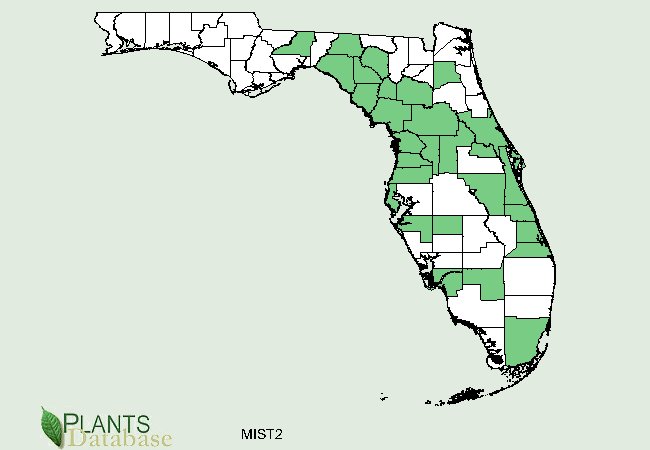

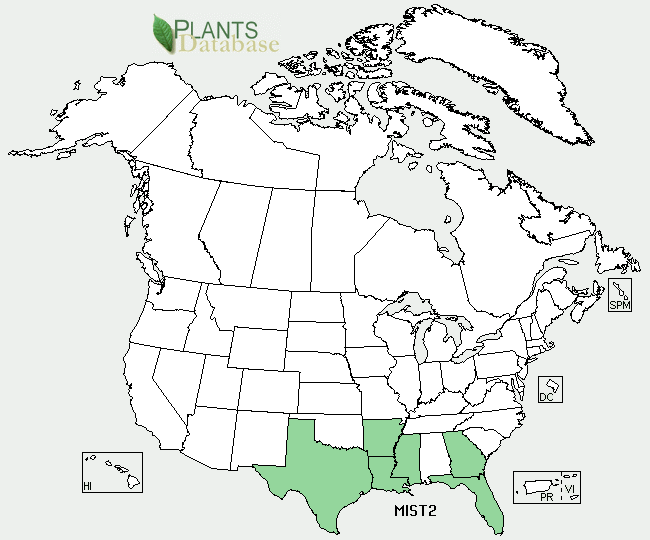
Links for Powderpuff

